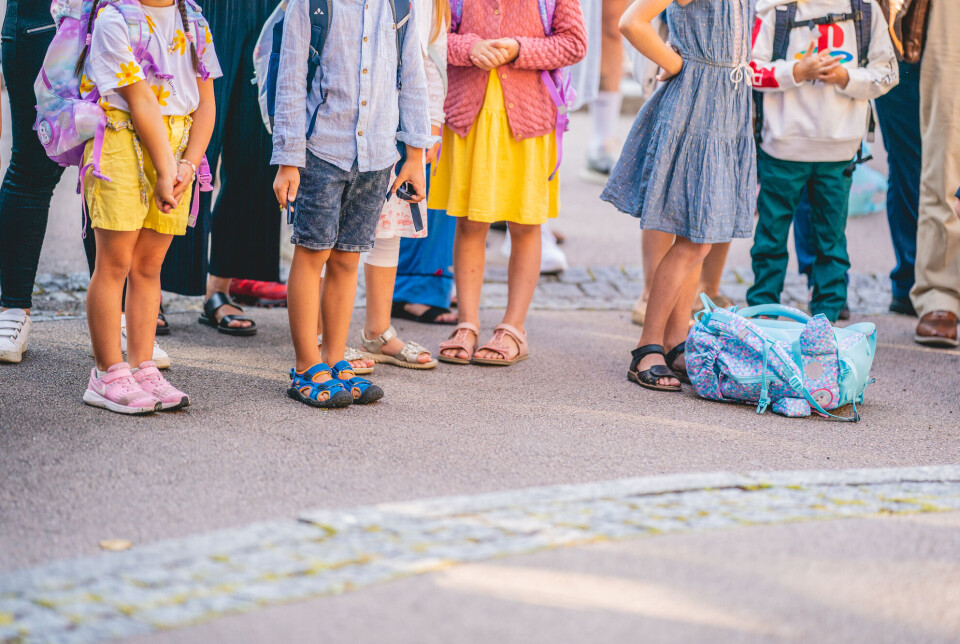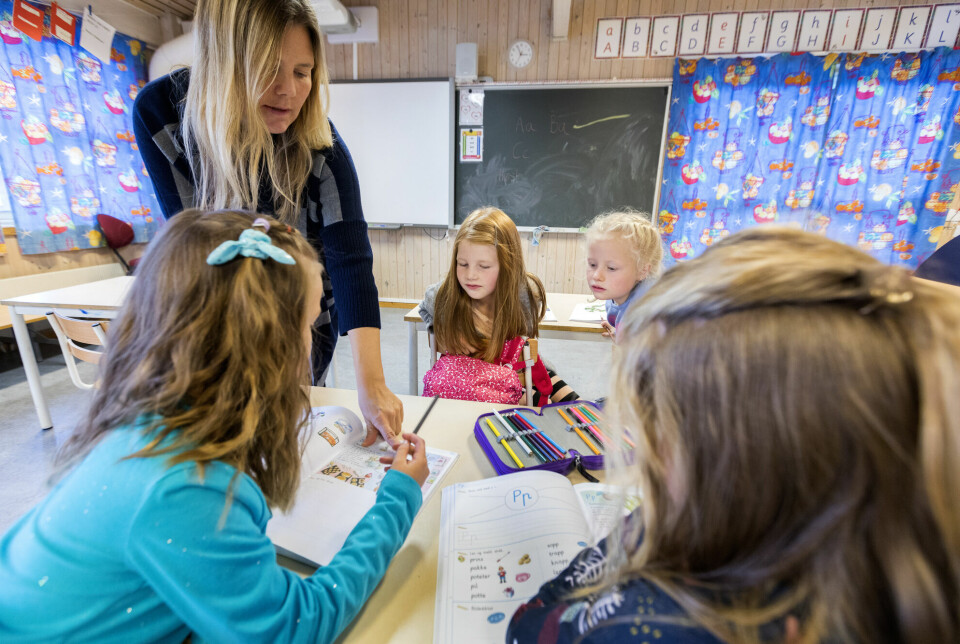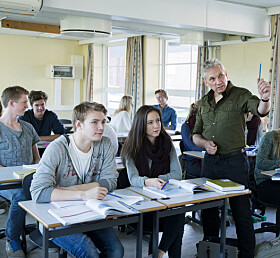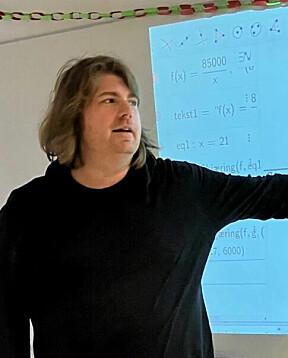
Thousands of Norwegian pupils have had two teachers in the classroom at the same time. How did it go?
A lot of money is being spent on increasing the teacher-student ratio for Norwegian pupils. But researchers have found the benefits to be limited.
“Simply putting an extra teacher in the classroom and continuing instruction as usual won’t necessarily lead to increased learning by the pupils,” says Professor Oddny Judith Solheim.
Solheim has led the research project Two Teachers in response to a major Norwegian school policy initiative.
The researchers investigated the teaching of reading to 5750 pupils who started Grade 1 of primary school in 2016. Many of these pupils, who attended primary schools in a number of different municipalities, had two teachers in the classroom at the same time.
Several hundred million kroner
Previous studies have shown that putting more teachers in the classroom has little or only a limited effect on pupils’ learning.
Nevertheless, the Norwegian parliament (Stortinget) allocated almost NOK 400 million - just under 40 million USD - for new teaching positions in order to achieve a higher teacher to student ratio.
Politicians simultaneously approved NOK 50 million - just under 5 million USD - to two research projects that are examining the effect of having more teachers in the classroom.
The Two Teachers research project at the University of Stavanger’s Reading Centre has looked at whether pupils became better at reading if they had two teachers. The data collection was carried out by 65 research assistants who were trained as teachers or in psychology.

Not easy to achieve
“Our results show that a higher teacher to student ratio can increase pupils’ learning. But this doesn’t happen on its own,” said Solheim in summarizing the results of the research.
Gaining instructional flexibility by having two teachers instead of just one does not require changing daily school routines all that much.
But teachers need to be open to new ways of thinking about their teaching in order to use these extra resources effectively.
“This may sound simple. But it isn’t,” Solheim said in a recent webinar.
One teacher ended up on sidelines
The researchers found that when two teachers were in the classroom at the same time, one teacher quite often ended up on the sidelines – that is, standing along the classroom wall while the other teacher carried out the instruction.
The researchers observed that the pupils in Grades 1 and 2 who took part in the study benefited from having two teachers when these two teachers truly shared the responsibility.
In these cases, the teachers cooperated well and had a clear division of roles.
If the two-teacher arrangement was left more to chance, then the pupils had limited or no benefit from having two teachers at the same time.
“The teachers need to step outside their comfort zone and dare to experiment, both organizationally and pedagogically,” says Solheim.
Pupils divided into groups
The researchers in the Two Teachers project divided the several thousand pupils in Grades 1 and 2, who were from 53 different municipalities, into different groups.
Some teachers and students were a control group and continued with teaching instruction as before.
The pupils who participated in the intervention classes were again divided into three different group arrangements with two teachers at the same time.
All the students who participated were surveyed before they started school, after the first school year and at the end of the second school year.
The teachers had to report weekly on how they had collaborated and distributed the work between them.

Effective for the weakest boys
In many cases, the researchers found no effect on the pupils' reading skills from having two teachers in class.
“But we did find a benefit for boys who started Grade 1 with weak written language skills,” said Solheim.
About a third of the boys fell into this category.
The researchers believe that many of the teachers chose to use the extra teaching resources to support the weaker boys in particular.
Teachers’ use of the extra teaching resource to work in small groups or with individual students is consistent with what the majority of the teacher pairs reported.
“Our observations and interviews with the teachers indicate that pupils who needed extra support were prioritized. These students received small group or one-on-one instruction,” Solheim says.
Discovered a paradox
In a separate sub-project, professor of literacy studies Atle Skaftun and his colleagues followed the teaching of Norwegian to 1st and 2nd graders in six schools in one municipality. They focused on how the two teachers actually collaborated.
“We found that the two teachers were together in the classroom for more than half of the time,” he says.
“During the rest of the time we observed them, only one of the teachers was in the classroom. As a rule, it was the head teacher who was present, while the supplementary teacher was in another room with one student or a small group of pupils.”
One thing that struck the researchers as surprising and paradoxical was that the students more often engaged in individual work when only one teacher was present.
“Teacher-led class teaching took place far more often when both teachers were present,” Skaftun says.
“When we say that we think this is paradoxical, it’s because having two teachers present offers twice as much capacity to guide the students when they work individually.”
“And conversely, when the teacher instructs in the classic role in front of the class, having two teachers present isn’t necessarily more productive. The question then becomes how the two teachers actually work together,” he says.
One teacher watched
Skaftun and his colleagues were struck by how much of the time one teacher instructed and the other teacher stood and watched when both teachers were in the room.
“We also found that the distribution of roles between the two teachers was generally fairly hierarchical. It reminded us of the relationship between a teacher and an assistant.”
Skaftun interprets the paradoxical use of the teacher resources that he observed as indicating that the teachers had not been encouraged to actively think through what roles they should have with the students.

The researchers saw many instructional possibilities during the time they spent in the classrooms, but found that the teachers they observed only grasped them to a limited extent.
Skaftun's challenge to teachers is to think in new ways and dare to renew their practices in the classroom. Don't just continue with what they have always done.
Strong collaboration for some teacher pairs
Another group of researchers for this project interviewed several pairs of teachers who had worked together.
These were either pairs of teachers who had achieved strong results with improved reading among pupils, or ones whose pupils showed far weaker skill development.
“On the surface, the distribution of work between these pairs of teachers looked fairly equal. In both groups, the head teacher had the main responsibility for the whole-class teaching, while the supplementary teacher was mainly responsible for supporting students who were lagging behind in their reading,” says Associate Professor Aslaug Fodstad Gourvennec.
What the researchers discovered was that in classes with weaker reading progress, the two teachers reported a fairly even division of responsibility for various tasks.
They appeared to work about the same amount, they said.
However, when the researchers dug deeper, they found that this was actually not the case. The supplementary teacher had far less real influence on the fundamental pedagogical decisions than the head teacher did.
“On the other hand, in classes that made good progress, we saw that the teachers’ collaboration on planning, implementing and evaluating the teaching was far more profound. Both teachers' voices were active and present in all major decisions,” Gourvennec says.
These teachers also told the researchers that they discussed their teaching together all the time.
“They communicated about all aspects of their teaching and collaboration. They discussed how they could best utilize the extra teaching resource all the time, and they discussed individual students. They also planned the teaching programme together.”
Avoided sidelining supplementary teachers
These teachers clearly made the most of having two people present for the students at the same time and thus avoided one teacher being sidelined. They were constantly aware of how the supplementary teacher could be used as an additional resource.
The researchers saw connections between what they observed and personality traits.
Teachers – just like the rest of us – are different kinds of people. The teachers who had the worst results with the extra teaching resource intervention were more likely to have experienced negative collaborative challenges. One of the teacher pairs interviewed by researchers found that the collaboration started off difficult and eventually became very problematic.
“Another pair of teachers struggled to find good ways to collaborate, despite having good intentions and appreciating each other as people.”
Gourvennec and her colleagues observed that pairs of teachers whose offices were far away from each other in the school building had more difficulty talking to each other.
Teachers who value differences
The teacher pairs who had good results from working together clearly valued the team teaching.
“These pairs of teachers were also very appreciative of their differences, such as personality, teaching style, preferences, experience, knowledge and competence.”
“The head teacher and the supplementary teacher in these pairs also seemed to share more traditional views of learning,” says Gourvennec.

“This group of teacher pairs emphasized that the differences between them were valuable and important for their own professional development. Team teaching gives them an opportunity to develop as teachers.”
Expensive measure
Thomas Nordahl is a professor at Inland Norway University of Applied Sciences.
“What the researchers found in this study is completely consistent with what international research has previously shown,” he says.
“Having two teachers in a classroom at the same time is a measure that has relatively little effect on pupils' learning in isolation.”
This finding caused controversy when international researchers published it several years ago, says Nordahl. Many people didn’t believe that it could be true.
“This doesn’t mean that two teachers can’t team teach effectively. But what I think the researchers in the Two Teachers study have found is that if both teachers are going to teach at the same time, they have to do things differently than when they’re alone in the classroom.”
He notes that if the teaching approach doesn’t change, then having two teachers in a classroom at the same time doesn’t contribute to better learning for the pupils.
And, Nordahl adds, this intervention is really expensive.
“This is probably the most expensive measure we could come up with, since salaries is the biggest expenditure for schools.”
———
Read the Norwegian version of this article at forskning.no






































